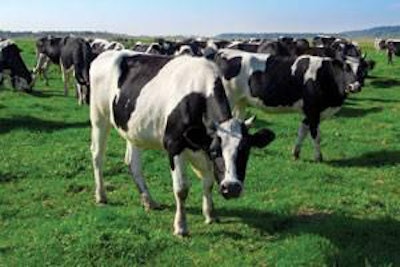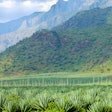
A comprehensive presentation at the Sustainability Conference organized by the U.S. Poultry and Egg Association, concurrent with the 2011 International Poultry Expo and International Feed Expo, provided a broad overview of the challenges facing beef production. In a thought-provoking review of challenges facing the world, Bryan Weech, director for livestock agriculture for the World Wildlife Fund, discussed meat production with limited resources.
Currently, 33% of the Earth’s surface is devoted to crops or is under grazing. This represents almost 60% of the total habitable area of our planet. Land area is less of a restraint than the availability of water, with arid regions of the world extending over large areas of the U.S. Southwest, Australia, Northern Africa and Central Asia. In these desert-like zones there is less than 240 gallons of water annually available per inhabitant. In contrast, in the tropics and in temperate areas availability ranges from 2,000 to 5,000 gallons per inhabitant on an annual basis. To bring into perspective the water requirements for products, Weech compared the water input required to produce a cotton t-shirt at approximately 250 gallons to a hamburger which could range from 800 gallons to 4,000 gallons depending on livestock system, processing and packaging.
Global food supply
Projection of world population suggests that the current 6.9 billion inhabitants will increase by an incremental 3 billion by 2050. Consumption of feed will more than double based on an anticipation of increased earning power in Asia, and 70% of the world’s population will live in metropolitan areas. Although income will triple, there will be wide disparities in the proportion of earnings required to feed families. Currently in the U.S., 10% of household income is spent on food consumed both within the home and from restaurants. In many under-developed regions in the world, as much as 80% of income is required to maintain even a subsistence level of nutrition.
There is no single scenario or area of land that could resolve the world’s food supply problems going forward for the next 40 years, but waste and inefficiency in the current agricultural systems will not be acceptable in 2050. A multifunctional approach will be required to virtually triple food production using the existing land area. Possible approaches to enhancing productivity were advanced by Weech. These could include innovations in genetics, which hopefully will produce a 50% improvement in output of both grains and livestock. Rectifying deficiencies in production practices, especially with regard to irrigation and water utilization, will be critical to achieving sustainability.
Eliminating waste by suppressing insect pests and fungi and reducing post harvest deterioration will represent a considerable challenge. Applying new and existing agronomic and livestock technology especially in developing areas will be pivotal to improving yields from under-performing land through selection of seed and fertilization and limiting over grazing. Collectively these scenarios have the potential to improve production to satisfy the needs of a burgeoning population.
Agriculture productivity
The metrics of agriculture productivity are important with respect to developing policy. Currently, producers, banking institutions and governments have a wide range of parameters to consider. These may include calories per acre, pounds of saleable meat per gallon of water, carbon emission avoided or sequestered per acre or per unit of output.
In the opinion of the World Wildlife Fund, it is necessary to optimize a number of goals to achieve sustainability. The message from the presentation was that any advances in production practices must be based on sound science and should be guided by optimizing parameters. Above all, availability of water will be the rate-limiting factor followed by carbon emission.
A number of multinational companies, including Cargill, JBS, McDonald’s Corporation, Wal-Mart and Intervet, supported the World Wildlife Fund Global Conference on Sustainable Beef in November 2010 in Denver. Regional meetings will occur throughout the year, with the first slated for June 2011 in Brazil, and the second Global Conference on Sustainable Beef is anticipated to take place in 2012.
Global dialogue is required to establish principles, criteria and indicators relating to sustainability. There must be consensus on the key impacts of production practices and technology, and policy should be based on a global peer review process.



















